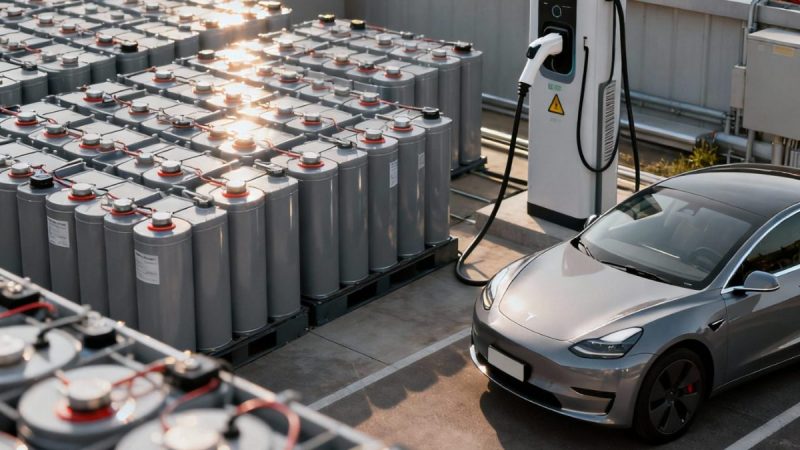How Robots Can Be Used To Improve Workplace Safety

Technological innovation, namely the use of robotic systems in the workplace has completely revolutionized the way businesses operate. No longer concepts plucked from a sci-fi movie, industrial robots have greatly evolved over the years, with applications stemming beyond automation of manufacturing and assembly-line processes.
Today, workplaces are merging human and machine intelligence and leveraging collaborative robots like mobile robots, service robots, and autonomous robots to create safer working conditions.
According to the Survey of Occupational Injuries & Illnesses from the Bureau of Labor Statistics, employers reported 2.1 million nonfatal workplace injuries in 2020. In manufacturing facilities, chemical plants, and similar industrial settings, injuries are frequently caused by overexertion, slips and falls, exposure to harmful substances, and machine-related incidents.
From protecting workers’ health to addressing complacency, here are five ways robots can help improve workplace safety.
Handling Heavy Objects
Built to handle physically intensive work, robots have the ability to lift and transport tremendously heavy objects. Manually lifting large, bulky objects in the workplace exposes employees to an increased risk of both short and long-term injuries — which could be detrimental to production and revenue goals.
Repeatedly picking up objects between 15 and 50kg is dangerous for workers. Our robot counterparts can handle more weight and move items faster, eliminating the safety risk this task poses to employees. Performing this task frequently often leads to overexertion, bad posture, and an increased likelihood of permanent injury, such as spinal cord damage. What’s more, injuries related to overexertion — like lifting, pushing, pulling, holding, carrying, or throwing objects — costs businesses upwards of $13.1 billion annually.
Fighting Fatigue
Both physical and mental fatigue can increase injuries and accidents in the workplace. Whether the culprit is monotonous and repetitive tasks or a lack of sleep that workers are fighting to push through, employees are putting their safety in jeopardy in lieu of staying at home or navigating the proper channels internally to get help.
As you may have guessed, robots don’t require breaks, making them an effective solution for combating workplace fatigue. Certain types of robots have the capacity to operate autonomously for hours — even days — without needing attention. For robotic systems that require manual operation, the facility can strategically adjust workflow to ensure operators are swapped in and out, so processes can continue uninterrupted.
Protection Against Health Hazards
Despite following protocols and precautions, workers still face a high risk of developing potential health-related issues due to things like chemical exposure or other environmental factors, such as heat or toxic fumes. From the manufacturing sector to the oil and gas industry, employees are continuously put in harm’s way purely due to the hazardous nature of their surroundings and day-to-day responsibilities. Working in dusty, toxin-filled conditions leaves your staff vulnerable to respiratory problems and even life-threatening diseases, such as lung cancer.
In the oil and gas industry, robots are leveraged as a way to avoid sending employees into confined spaces like industrial storage tanks. Cleaning these contaminated and compact tanks using traditional means can pose severe health and safety risks for workers. Robotic tank cleaning technology not only protects your crew from perilous working conditions, but it can help drive efficiency and reduce cleaning-related costs by an estimated 20% to 25%.
Improved Visibility
Through the use of machine learning, artificial intelligence, and the Internet of Things, robotic systems can deliver robust analytics — providing invaluable insight into everything from process inefficiencies to equipment maintenance needs. This information enhances visibility, allowing leaders to make data-driven decisions and intercept issues before they escalate. Data collected can also be leveraged to introduce new processes or increase safety measures where necessary to stave off accidents and decrease workplace injuries.
Disaster Response
While the goal is to implement procedures aimed at minimizing accidents, if one does occur, robots serve as an effective tool for providing aid and control in unexpected situations. From fighting fire outbreaks at oil refineries and controlling oil spills to removing heavy objects to free trapped workers, robots can be utilized to strengthen your company’s disaster response strategy.
Robots Will Continue to Help
As technology continues to evolve, so will the breadth of capabilities robots offer across all industries. Employees deserve to work in an environment where safety initiatives are prioritized and they feel protected while carrying out their daily responsibilities. With the implementation of robotic systems on the rise, we can expect to see a corresponding improvement in workplace safety.






